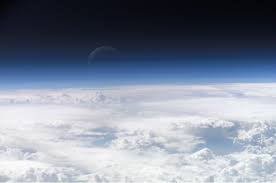The Importance of Atmosphere in Creating Memorable Experiences
Atmosphere plays a crucial role in shaping our experiences, whether we are dining at a restaurant, attending an event, or simply spending time in a particular space. The ambiance, mood, and overall feel of a place can significantly impact how we perceive and remember our interactions there.
When it comes to restaurants, for example, the atmosphere can make or break the dining experience. A cozy and welcoming environment can enhance the flavors of the food and create a sense of comfort and relaxation for diners. On the other hand, a noisy and chaotic atmosphere can detract from the enjoyment of a meal and leave guests feeling stressed or unsettled.
Similarly, events such as weddings, parties, or conferences rely on atmosphere to set the tone and create the desired mood. The décor, lighting, music, and overall design of the space all contribute to shaping the atmosphere and influencing how attendees feel during the event.
Creating the right atmosphere requires attention to detail and an understanding of how different elements work together to evoke specific emotions and responses. Colors, textures, scents, sounds – all play a part in crafting an atmosphere that resonates with people on a subconscious level.
Ultimately, a well-crafted atmosphere has the power to transport us to different worlds, evoke memories and emotions, and create lasting impressions. Whether it’s a bustling café with the aroma of freshly brewed coffee or a serene garden lit by soft candlelight, the atmosphere has the ability to enhance our experiences and make them truly unforgettable.
Understanding the Atmosphere: Top 6 Frequently Asked Questions
- What is the definition of one atmosphere?
- What is the atmosphere made of?
- What is a simple definition of atmosphere?
- What is an example of an atmosphere?
- What is atmosphere and example?
- What is the best definition for atmosphere?
What is the definition of one atmosphere?
One atmosphere is a unit of pressure that is commonly used in various scientific and engineering contexts. It is defined as the pressure exerted by a column of mercury 760 millimeters (29.92 inches) high at 0 degrees Celsius at sea level. This standard atmospheric pressure is equivalent to 101,325 pascals or 14.7 pounds per square inch (psi). One atmosphere is often used as a reference point for measuring and comparing pressures in different systems, making it a fundamental concept in the study of fluid mechanics and atmospheric science.
What is the atmosphere made of?
The atmosphere is composed of a mixture of gases that surround the Earth and are held in place by gravity. The primary components of the Earth’s atmosphere include nitrogen, oxygen, argon, and trace amounts of other gases such as carbon dioxide, methane, and water vapor. These gases play a crucial role in regulating temperature, protecting life on Earth from harmful solar radiation, and maintaining the delicate balance necessary for life to thrive. Understanding the composition of the atmosphere is essential for studying weather patterns, climate change, and the overall health of our planet.
What is a simple definition of atmosphere?
The atmosphere can be defined as the layer of gases that surrounds a planet, such as Earth, and is held in place by gravity. It consists primarily of nitrogen and oxygen, along with trace amounts of other gases, and plays a vital role in regulating temperature, protecting life from harmful radiation, and facilitating weather patterns. In essence, the atmosphere is the protective blanket that envelops our planet and sustains life as we know it.
What is an example of an atmosphere?
An example of an atmosphere can be found in a bustling city market on a sunny day. As you navigate through the crowded streets, you are enveloped in a symphony of sights, sounds, and smells. The vibrant colors of fresh produce and textiles catch your eye, while the chatter of vendors and customers creates a lively backdrop. The aroma of sizzling street food wafts through the air, mingling with the scent of blooming flowers from nearby stalls. This bustling marketplace exudes a dynamic and energetic atmosphere that is both invigorating and captivating to all who experience it.
What is atmosphere and example?
Atmosphere refers to the overall mood, feeling, or ambiance of a particular place or environment. It encompasses various elements such as lighting, décor, music, scent, and overall design that work together to create a specific atmosphere. An example of atmosphere can be seen in a cozy coffee shop with dim lighting, the aroma of freshly brewed coffee filling the air, soft background music playing, and comfortable seating arrangements that invite customers to relax and unwind. This curated setting contributes to a warm and inviting atmosphere that enhances the overall experience for patrons.
What is the best definition for atmosphere?
The best definition for atmosphere refers to the overall mood, feeling, or environment of a place or situation. It encompasses various elements such as lighting, decor, sounds, scents, and general ambiance that combine to create a specific emotional response in individuals. Atmosphere plays a crucial role in shaping experiences, whether in a restaurant, event venue, or any other setting, as it can greatly influence how people perceive and interact with their surroundings. A well-crafted atmosphere has the power to evoke emotions, set the tone for an experience, and leave a lasting impression on those who encounter it.

